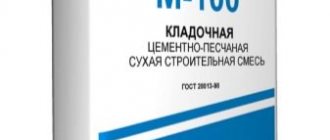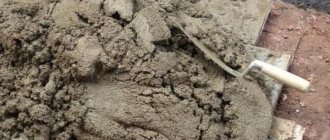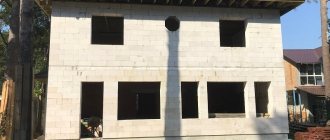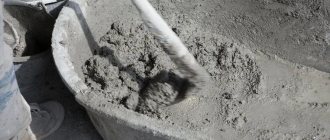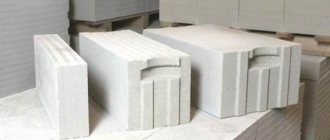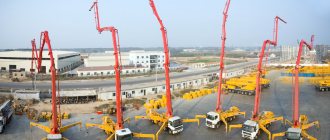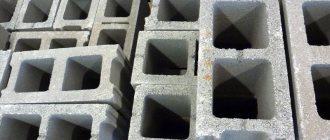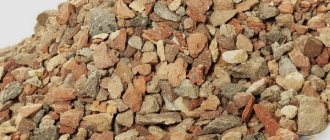| Name of bulk material | Bulk density t/m3 | Weight at 1 m3 |
| PGS | 1 ,65 | 1 .65 t. |
| Natural sand | 1 ,4 | 1 ,4 t. |
| River sand | 1 ,5 | 1 .5 t. |
| Crushed stone fr. 5-10 | 1 ,43 | 1 .43 t. |
How many kilograms are in one cube?
Mass of a cubic meter of crushed stone
| 1 cube of crushed stone | Weight, kg |
| crushed gravel 20-40 | 1540 |
| crushed gravel 40-70 | 1650 |
| granite crushed stone | 1390 |
| granite crushed stone 5-20 | 1350 |
Interesting materials:
How long to cook milk mushrooms without soaking? How long to cook champignons in a pan? How long should you cook the dumplings after they have floated? How long should you cook the volushki after soaking? How long to cook frozen champignons? How many watts per square meter of heating? How many watts does the GTX 650 consume? How much did the heaviest watermelon weigh? How much does 1 capsule of fish oil weigh? How much does 1 cube of gravel weigh?
Application
is an inexpensive building material that does not require any special conditions of transportation and storage, is environmentally friendly and easy to use.
It is a complex ingredient of concrete along with water and cement. ASG density
important in the manufacture of concrete mixtures in order to accurately maintain proportions and obtain the final material of a certain grade. When it comes to large volumes of concrete, it is always worth checking the density first (this does not take much time and is not a complicated process) and adjusting for it.
Another application of ASG is road construction and leveling of large sites. This material perfectly holds the shape of its layer and has drainage functions: water does not accumulate on its surface, but easily passes through. Sand and gravel mixtures are used to make substrates for asphalt roads and house foundations.
Certificate for sand and gravel mixture
The certificate of conformity is a document that confirms the quality of the material according to GOST parameters. Certification is carried out after laboratory tests in accordance with state standards. Since obtaining a certificate is a voluntary decision, the presence of such a document indicates the good faith of the manufacturer.
The maximum size of ASG gravel can be no more than 70 mm. In OPGS this value is 10, 20, 40 and 70 mm. The sand fraction used is medium and coarse.
Sand rocks today are the main material used in the construction of buildings for various purposes. It is not surprising that many are interested in the question of how much a cube of sand weighs, because it is a fundamental component of concrete, without which not a single building or house can do.
Pricing
The formation of the final cost of ASG is influenced by the following factors:
- Density. The higher it is, the higher the cost. Conversion tables from tons to cubic meters depending on density can be found freely available on the Internet. Also, high density can be initially specified to simplify transportation.
- The ratio of sand and . The second ingredient is noticeably more expensive. The highest cost is for enriched ASG.
- Quality of components. The sand must be washed to remove clay particles and dried, and the gravel must have a certain structure and size of stones.
- A delivery method that prevents contamination of the material and the ingress of water into it.
- Batch size.
The optimal supplier is an enterprise that provides a full range of services and has its own production of components. This allows you to control the cost and quality of products.
Summary
In this section of our construction site we will talk about how many tons are in a cubic meter
contains each of the proposed types of construction equipment.
But first, we note that these are approximate figures. In some cases, the weight of the material depends on the fraction, type, humidity and other natural factors.
How many tons in a cube?
Speaking about ASG, it can be noted that its weight is equal to its bulk density. Builders also equate the density of ASG and sand contained in a sand-gravel mixture.
It is important to know that if the ASG contains expanded clay, the density will be 10-15% less than usual. On average, when asked how many tons are in a cube
of this material we can answer that no more than 1.55 t/m3.
Let us also add that its density does not differ much from the weight of the OPGS. Therefore, the indicated weight is also valid for him.
How many tons in a cube?
Speaking about sand, it is important to note that the density of this rock in turn depends on the grain size, humidity (as with other materials) and foreign impurities, such as clay, for example.
Also, its weight is affected by the minerals contained in the sand. Its average density is 1.3-1.8 t/m3.
According to GOST (GOST 8736-77), the construction type of this rock contains 1600 kg in each cubic meter.
How many tons in a cube?
It is a light type, but its weight also varies depending on the grain size - that is, on the fraction. It is worth noting that the smaller the size, the heavier the mass will be and vice versa, the larger the grain, the lighter it is. The brand of construction equipment also depends on the faction.
It is assigned to this material when it is in a dry state. For example, grade 400 indicates that a cubic meter of expanded clay contains 400 kg. The determining factor in the weight of this material is the quality of the manufacturer’s technology. So, for an average size - 10-20 mm, the weight is 300 - 500 kg per cubic meter.
How many tons in a cube?
You have probably already learned in other sections of our website that crushed stone comes in different origins. What all has in common is that its weight depends on the fraction and humidity.
On average, the figures range from 2 to 2.5 tons per cubic meter. But such measurements are taken under different humidity conditions. We tell you how many tons are in a cube
material under conditions of minimal humidity to be more precise.
Crushed granite contains 1.37 tons per m3. As a rule, these are fractions such as 5-20, 20-40 and 40-70. Crushed gravel contains 1.3 tons per m3 (5 -20). Crushed limestone has the same weight - 1.3 tons per m3 (2-40).
How many tons in a cube - Concrete
Concrete contains slightly different numbers. In general, when asked how many tons are in a cube of concrete
difficult to answer because it is very diverse!
We will try to adhere to established standards for construction appearance. According to GOST 25192-82, there are several types of concrete with different weights.
Heavy Medium Density Type
should have 2.2-2.5 tons/m3.
Fine-grained type with medium density
- 1.8 tons per m3.
There is also a light, dense or porous structure
; its weight will fluctuate between 0.8-1.8 tons per m3.
By calling our numbers, you can find out not only how many tons are in a cube, but also get a clear answer to all your questions on the topic of pgs, opgs. We look forward to your calls every day.
How much does 1 cube of sand-gravel mixture weigh, the weight of 1 m3 of sand-gravel mixture. The number of kilograms in 1 cubic meter, the number of tons in 1 cubic meter, kg in 1 m3. Bulk density of sand-gravel mixture and specific gravity.
What do we want to learn today? How much does 1 cube of sand-gravel mixture weigh, the weight of 1 m3 of sand-gravel mixture?
No problem, you can find out the number of kilograms or the number of tons at once, the mass (weight of one cubic meter, weight of one cube, weight of one cubic meter, weight of 1 m3) is indicated in Table 1. If anyone is interested, you can skim the small text below and read some clarifications. How is the amount of substance, material, liquid or gas we need measured? Except for those cases when it is possible to reduce the calculation of the required quantity to the counting of goods, products, elements in pieces (piece counting), it is easiest for us to determine the required quantity based on volume and weight (mass). In everyday life, the most common unit of volume measurement for us is 1 liter. However, the number of liters suitable for household calculations is not always an applicable way to determine the volume for business activities. In addition, liters in our country have not become a generally accepted “production” and trade unit for measuring volume. One cubic meter, or in its abbreviated version - one cube, turned out to be a fairly convenient and popular unit of volume for practical use. We are accustomed to measuring almost all substances, liquids, materials and even gases in cubic meters. It's really convenient. After all, their costs, prices, rates, consumption rates, tariffs, supply contracts are almost always tied to cubic meters (cubes), and much less often to liters. No less important for practical activities is knowledge of not only the volume, but also the weight (mass) of the substance occupying this volume: in this case we are talking about how much 1 cubic meter weighs (1 cubic meter, 1 cubic meter, 1 m3). Knowing mass and volume gives us a fairly complete idea of quantity. Site visitors, when asking how much 1 cube weighs, often indicate specific units of mass in which they would like to know the answer to the question. As we noticed, most often they want to know the weight of 1 cube (1 cubic meter, 1 cubic meter, 1 m3) in kilograms (kg) or tons (t). Essentially, you need kg/m3 or t/m3. These are closely related units that define quantity. In principle, a fairly simple independent conversion of weight (mass) from tons to kilograms and vice versa is possible: from kilograms to tons. However, as practice has shown, for most site visitors a more convenient option would be to immediately find out how many kilograms 1 cubic meter (1 m3) of sand and gravel mixture weighs or how many tons 1 cubic meter (1 m3) of sand and gravel mixture weighs, without converting kilograms into tons or vice versa - the number of tons in kilograms per cubic meter (one cubic meter, one cubic meter, one m3). Therefore, in Table 1 we indicated how much 1 cubic meter (1 cubic meter, 1 cubic meter) weighs in kilograms (kg) and tons (t). Choose the table column that you need yourself. By the way, when we ask how much 1 cubic meter (1 m3) weighs, we mean the number of kilograms or the number of tons. However, from a physical point of view, we are interested in density or specific gravity. The mass of a unit volume or the amount of substance contained in a unit volume is bulk density or specific gravity. In this case, the bulk density and specific gravity of the sand-gravel mixture. Density and specific gravity in physics are usually measured not in kg/m3 or tons/m3, but in grams per cubic centimeter: g/cm3. Therefore, in Table 1, specific gravity and density (synonyms) are indicated in grams per cubic centimeter (g/cm3)
Table 1. How much does 1 cube of sand and gravel mixture weigh, the weight of 1 m3 of sand and gravel mixture. Bulk density and specific gravity in g/cm3. How many kilograms are in a cube, tons in 1 cubic meter, kg in 1 cubic meter, tons in 1 m3.
The sand-gravel mixture has a granular structure and strength. Thanks to these qualities, this material is widely used in the construction of various objects and roads.
Technical parameters of PGS and OPG
Depends on the technical characteristics of the material. When purchasing, you need to pay attention to the following parameters:
- Shape and size of gravel grains. Gravel of various fractions (from 10 to 70 mm) can be found in the PGS. In the OPGS these indicators are clearly regulated and are either 10, 20, 40, or 70 mm.
- Sand to gravel ratio. The strength of the future structure and scope of application depend on this. The more gravel, the stronger it is.
- Characteristics of gravel: composition, strength, percentage of weak grains, frost resistance.
- Sand parameters: fineness modulus, grain and mineralogical composition.
- The amount of impurities in sand and gravel also affects strength and durability. The purer the material, the better.
- Indicators of strength and frost resistance of the components of the mixture.
Typically, all this information is provided by the supplier.
What type of sand-gravel mixture is there?
There are natural sand and gravel mixture (NGS) and enriched (OPGS). The latter may contain different amounts of gravel, depending on the application. The location of the extraction is also important. Mountain-gully ASG is characterized by the acute angular shape of the particles and the presence of impurities, and therefore is not suitable for concrete. Unlike sea water, which contains virtually no clay or dust. The homogeneous structure and purity of this material make it indispensable as a concrete filler. Lake-river AGS also has a homogeneous composition, but may contain clay particles, silt, soil and organic elements.
Natural ASG is a mineral resource. According to GOST 23735-79, the gravel content in it must be at least 10%, but not more than 95%.
OPGS is created artificially on the basis of natural. The amount of gravel elements here can be 15-25%, 25-35%, 35-50%, 50-65% and 65-75%.
To determine the type of sand-gravel mixture and assign a classification, the material undergoes a series of tests and analyses, during which the amount of impurities and grains of weak rocks, the size of sand and gravel are measured, strength and frost resistance are tested.
Types of construction sand
An important characteristic is the type of bulk mixture, this determines how many kg 1 cubic meter of sand is valued at. The same applies to storage conditions, namely temperature and humidity levels. The standard weight of construction bulk material is 1550-1700 kg/m3 (in a bucket 18.5-20.4 kg). If we take dry grains of quartz, then its specific gravity is 1440 kg/m3; to find out the current figure for 10 cubic meters, you need 1440*10. When compacted, a ton weighs 1680 kg, and when wet it weighs 1920 kg.
| Name of material | Weight of cube (cubic meter), kg | Bucket weight (12l), kg |
| Construction sand (GOST 8736-93) | 1550 — 1700 | 18,5 — 20,4 |
| River sand | 1630 | 19,5 |
| PGS - sand and gravel mixture | 1600 | 19 |
| Gravel | 1400 | 17 |
| Expanded clay (GOST 9757-90) | 250-800 | 3 — 9,6 |
| Crushed granite | 1470 | 17,5 |
| Crushed sandstone | 1300 | 15,5 |
| Crushed waste heap | 1150 | 14 |
| Crushed tuff stone | 800 | 9,5 |
| Crushed marble | 1500 | 18 |
| Crushed limestone | 1300 | 15,5 |
| Crushed slag stone | 1500 | 18 |
| Slaked lime | 2210 | 26,5 |
| Quicklime | 3370 | 40 |
| Gypsum | 2200 — 2400 | 26,5 — 29 |
| Cement | 1300 | 15,6 |
| Expanded vermiculite (GOST 12865-67 | 100 — 200 | 1,2 — 2,4 |
To obtain accurate data, it would be useful to use a special table that indicates data for different types.
| River | It is mined on the river bottom and is characterized by its purity and gray tint. The dimensions of individual elements range from 0.3-0.5 mm. More often used for preparing special mixtures and solutions. Drainage systems are often organized with its use. Specific gravity is 1630 kg/m3 |
| Career | an open mining method is used, the fraction can reach 3.2 mm, it is used for foundation work and repair of sidewalk paths. Often, quarry “bulk” after sifting is used for finishing/plastering work. HC = 1500 kg/m3 |
| Nautical | as the name implies, it is mined at the bottom of the sea. Despite the high cost, it is used in many fields. Specific gravity is 1620 kg per m3 |


